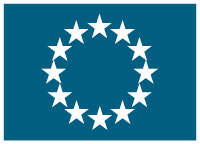Impact of hydrological extremes on alpine karst groundwater resources
(IMKA)
Start date: Mar 1, 2012,
End date: Feb 29, 2016
PROJECT
FINISHED
Karst aquifers supply ca. 25 % of the global population with drinking water. In some European countries and Alpine regions, more than 50 % of the water supply relies on karst groundwater. At the same time, karst aquifers are particularly vulnerable to contamination, because of their hydrogeological characteristics, such as rapid and turbulent flow in a network of conduits and caves. Karst springs often show rapid and marked discharge variations in response to precipitation and snowmelt. Chemical and microbial parameters also display large variations. Long periods of good water quality are occasionally interrupted by short but intense contamination events, often following storm rainfall. Identifying these events and reacting accordingly is crucial for the safe use of these water resources. Due to climate change, spatial and temporal precipitation patterns will change and the frequency and intensity of storm rainfall will increase. Therefore, contamination events at alpine karst springs are also expected to become more frequent and intense. Thus, the overall goal of the proposed project is to study the influence of intensified storm rainfall events on groundwater contamination in alpine karst regions. The three major methodological approaches of the project include: (i) Detailed monitoring of spring discharge and water quality parameters at selected springs; (ii) experimental field work, such as tracer tests during different hydrological conditions, ranging from low- to high-flow conditions and (iii) application of different concepts for groundwater protection zone delineation and development of an adjusted concept which incorporates the impact of climate change. This will directly allow a re-evaluation of existing groundwater delineation guidelines, the prediction of the contamination risk and help save groundwater as a future drinking water resource.
Get Access to the 1st Network for European Cooperation
Log In
or
Create an account
to see this content
Coordinator
KARLSRUHER INSTITUT FUER TECHNOLOGIE
€ 100 000,00- Berndt Kronimus
- KAISERSTRASSE 12 76131 KARLSRUHE (Germany)









